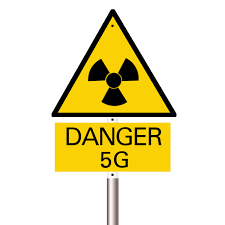Microwatt
a unit of power equal to one millionth of a watt. Symbol : μW, μw
MILLIWATT- a unit of power equal to one thousandth of a watt. Abbreviation : mW
MILLIGAUSS- One-thousandth of a gauss (mG). It’s the unit of measurement for magnetic fields most commonly used in North America
TESLA “T” – is a derived unit of the magnetic induction (also, magnetic flux density) in the International System of Units.
NANO TESLA nT stands for nano-Tesla (10^-9 Tesla; magnetic field strength measurement unit) nT stands for nano-Tesla
WATT- One watt Watts are a measurement of power, describing the rate at which electricity is being used at a specific moment. For example, a 15-watt LED light bulb draws 15 watts of electricity at any moment when turned on. Watt-hours are a measurement of energy, describing the total amount of electricity used over time.
The number of watts is equal to amps multiplied by volts. That’s it! In other words, watt=amp X volt. Sometimes you will see this formula written as W=A X V.
is also defined as the current flow of one ampere with voltage of one volt.
Dr. Mercola explains certain emf field health effects:
https://articles.mercola.com/sites/articles/archive/2011/02/09/powerful-and-simple-tips-to-help-lower-your-emf-risks.aspx
Also Definitions below
Here are a list of easy to understand, not too technical electromagnetic field (EMF) definitions.
If there is a definition you are looking for which you can’t find on this page, let me know in the comment box at the bottom of the page and I’ll add it in! SCROLL SIDE TO SIDE
Electromagnetic field definitions
Alternating current
An electrical current that changes strength and direction of flow with a certain regular cycle. For example, 60 Hertz alternating current (AC) is an electrical current that changes its polarity (from positive to negative and back to positive; a complete cycle) sixty times per second.
Ampere
A unit of measure for electric current. Amperes or amps are quantity. Thought of in terms of water, amps are like gallons or buckets (volts are the pressure – see below).
Amplitude
Amplitude is the measurement of the maximum of peak displacement compared to the zero rest level, that’s to say its the height of the wave. The unit of amplitude varies with the kind of waves we are talking about. E.g. The amplitude of an electric field is measured in V/m.
Antenna
An antenna is a conductor that can send and receive EMFs such as microwave, radio or satellite signals. A high-gain antenna increases signal strength, a low-gain antenna receives or transmits over a wide angle. Also called an aerial.
Attenuation
Attenuation is the opposite of amplification. It means reduction in signal strength. For RF shielding products the attenuation is commonly expressed in decibels (dB) at a certain frequency because the attenuation changes according to the frequency.
Attenuation Specification
The attenuation specification for a shielding material indicates how much radiation penetrates through the shield.
Bus or busbar
A bar with screw connections for either neutral or grounding conductors.
Code
As far as electricity goes in the US this refers to the National Electrical Code (NEC), which is revised every three years.
Conductors
Any material which passes electrical current. Metal is generally used as a conductor – other substances such as the earth or the human body can be good conductors which partly explains the health issues with EMFs.
Conduits
Typically metal pipes for carrying electrical wiring though they can be made of PVC or other materials. They can act as grounding conductors for electrical circuits in some circumstances.
Current
An electric current is a flow of electric charge through a power line or an electric wire. Like water flows through a pipe an electric current flows in a wire. Where currents flow magnetic fields are produced.
Direct current (DC)
An electric current that flows in one direction only, as opposed to AC which flows back and forth.
Distribution lines
Lines carrying power to neighborhoods (primary distribution) and to one or several buildings (secondary distribution).
Directional EMF Meter
A directional EMF meter can detect EMFs from a given direction as opposed to an omni-directional (or triaxial) meter which at any time gives the reading of the EMFs coming from all directions in a given position. It may be seen as an advantage for a RF meter to be directional because it allows you to determine the direction of the RF source.
Dirty Electricity
A form of electrical pollution commonly found on house wiring. For a detailed explanation of dirty electricity and what to do about it click here.
Earth
English term for ground.
Electric field
A zone of potential difference between oppositely charged conductors or between conductors and ground. It’s measured in volts per meter or V/m. Electric field is a function of voltage and not of current.
Electromagnetic Fields
An electromagnetic field, also called an EMF, is a region of space where electric and magnetic forces interact. Often used to refer to the general phenomena associated with fields spreading out from conductors or antennas, depending on the frequency.
Electromagnetic spectrum
The electromagnetic spectrum or EMF spectrum is used to show the relationship between different types of EMFs according to their frequency and wavelength.
Electrosmog
A term used to refer to the excessive density of electromagnetic fields, from both wired and wireless sources, in the environment.
ELF
Extremely low frequencies are in the range 1-300 Hz though sometimes defined as being up to 3kHz. Your homes’ electrical wiring (60Hz in US) is in this ELF range.
Frequency
EMFs are expressed in terms of their frequency and wavelength. Frequency is how many complete waves go by per second. This rate per second is expressed in Hertz (Hz).
Gauss
A unit used for measuring magnetic field strength (flux density). Milligauss (mG) is more commonly used for measuring health impacts. One gauss equals 1,000 milligauss. Tesla or microTesla is used more commonly in Europe. 1 µT (microtesla) = 10 mG (milligauss)
Gaussmeter
A device used to measure magnetic field strength.
Ground
Used as a verb or noun. As a verb it means to connect in some way to either earth or to a conductor which serves in place of the earth. Sometimes used when the more accurate term would be “bond.” N.B. it is not the earth connection which protects a circuit from a “ground fault,” but a solid connection back to the transformer neutral.
Harmonics
Harmonics and transients are a form of “noise” or “distortion” which attach to the fundamental wave, thereby producing a distorted waveform. Commonly known as dirt electricity.
Hertz
Used to measure the rate at which charge changes polarity of an AC electric current. One Hertz is one cycle per second.
Hot
As a noun it refers to the ungrounded circuit conductor carrying the voltage.
Ionizing Radiation
According to the World health Organization (WHO), it’s “radiation with enough energy so that…….it can remove tightly bound electrons from the orbit of an atom, causing the atom to become charged or ionized”. These unpaired electrons are otherwise termed ‘free radicals’.
Insulation
A material which is a poor conductor of electric current.
Magnetic field
A zone of energy which accompanies every electric current. Can be an AC or DC magnetic field (MF) – measured in milligauss. A typical source of magnetic fields is faulty electrical wiring and power lines.
Microwaves
In the US the FCC (Federal Communications Commission) defines “microwaves” as a subcategory of RF radiation operating at frequencies ranging from about 1 GHz upward
Milligauss
One-thousandth of a gauss (mG). It’s the unit of measurement for magnetic fields most commonly used in North America.
Neutral
Or neutral conductor. The common term for a grounded conductor (GC), white in the US.
Non-ionizing radiation
Devices like cell phones, cordless phones, WiFi emit non-ionizing radiation. Ionizing radiation has the ability to break molecular bonds, non-ionizing radiation was once considered safe because it can’t do this.
Phase
Usually refers to one of the voltage carrying conductors in a power line or in an entrance cable to a building.
Phasing
The positioning of each phase of the circuit on a utility line with respect to the other phases so as to minimize EMFs through cancellation.
Power Line Frequency EMFs
Otherwise known as ‘extremely low frequency’ (ELF) electromagnetic fields (see above). The frequencies used are typically in the 50 – 60 Hz range. These frequencies are what typically should be found on household wiring.
Radiation
A term for energy which leaves its source and travels. Power frequencies as found in electrical wiring generate negligible radiation. Radio frequencies and above are true radiating sources.
Radio Frequency Radiation (RF)
These are high frequency EMFs in the range 10 MHz-300 GHz. This category of EMFs is transferred through the air; the term “wireless” is often used. They relate essentially to telecommunication devices like cell phones, WiFi etc. Click here for a more detailed explanation of radio frequency radiation.
Resistance
The property of a material to resist the flow of electrical current. Current flowing through resistance always results in dissipation of energy usually in the form of heat.
Service Drop
The overhead which brings power to a residence or business from the distribution line. It usually attaches to the eave of the building if overhead.
Shielding
Methods used for reducing EMF exposures.
Short circuit
An unintentional connection between hot and neutral conductors in a circuit or between two hots.
Switched Mode Power Supply (SMPS)
A device used to convert electrical power and commonly found in many modern electrical devices that work at low voltage including smart meters, DECT phone chargers, computers etc. SMPS converts voltage and current (AC to DC) by constantly switching the source on and off to supply the needed voltage at the output. This switching can create dirty electricity. The alternative, linear mode power supply avoids this problem by offering a constant voltage but is less energy efficient and more expensive.
Stray Voltage
A misnomer, neutral current does not stray, it follows all available paths to complete the circuit back to the transformer or substation.
Tri-axial EMF Meter
A tri-axial EMF meter is a meter which gives a reading based on the 3 axes (X,Y and Z). To obtain the equivalent with a single axis meter, in any given location typically means you would have to take measurements on the x, y and z axes, square these numbers then add them together and take the square root. One of the best known Tri-axial EMF meters is the Trifield meter.
Tesla
A large unit of measure for magnetic fields. One tesla (T) equals 10,000 gauss. One microtesla equals 10 milligauss.
Three-Phase Service
A service that brings in all three phases from the power line plus the neutral. Common in commercial buildings.
Two-Phase Service
Service that brings in two of the three phases from the power line plus a neutral. This type of service always produces significant neutral current since the two phases never balance.
Very Low Frequency (VLF)
EMFs in the frequency range of 3 kHz to 30 kHz.
Volt
Used to measure electrical potential. Its the electrical force which propels current in a conductor. The usual comparison is with water. A volt is the pressure, like psi in water, but applied to electrons.
Volts per meter
Electric fields are usually measured in volts per meter (V/M).
Wavelength
The distance between waves. As frequency increases, wavelength decreases, and vice versa. At 60 Hz the wavelength is approximately 3,100 miles. At radio frequency ranges the wavelength is closer to thirty or forty feet.



